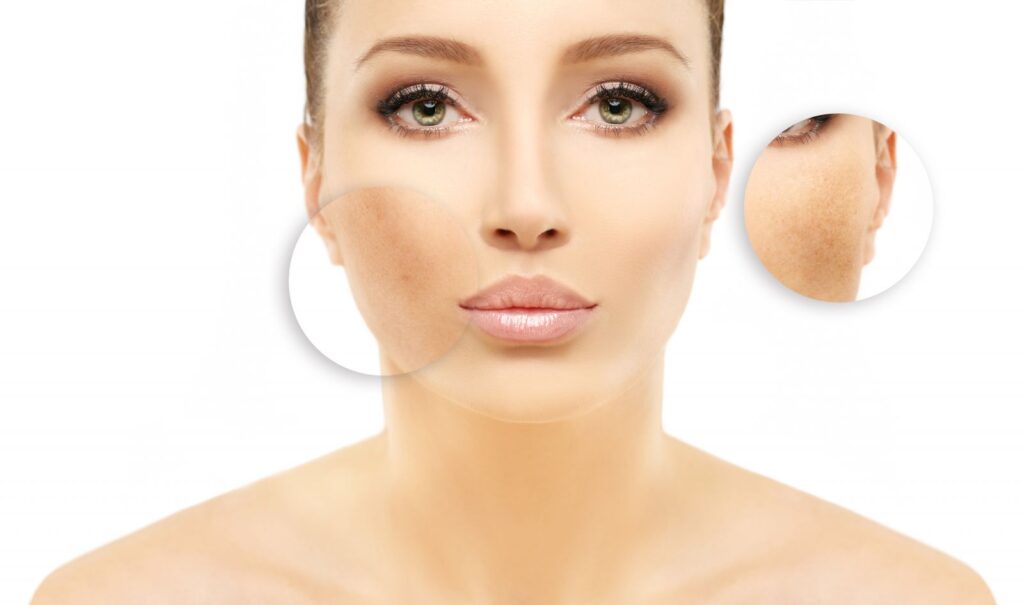
The hyperpigmentation treatment market is anticipated to reach a valuation of USD 4.78 billion in 2023, according to recent market analysis. With a compound annual growth rate (CAGR) of 9.5% projected from 2023 to 2033, the market is set to experience significant growth driven by increasing awareness of skin health, advancements in treatment options, and a rising prevalence of skin disorders.
Hyperpigmentation, characterized by dark patches on the skin, can arise from various factors, including sun exposure, hormonal changes, and aging. The growing demand for effective treatments and the increasing interest in aesthetic dermatology are contributing to the market’s expansion.
As consumers prioritize skin health and appearance, the demand for both topical and procedural treatments for hyperpigmentation is expected to surge. This trend reflects a broader movement towards enhancing personal care and wellness.
A slight decrease in melanin synthesis outcomes in skin hypopigmentation. Hyperpigmentation disorders can be treated with laser treatment, cosmeceuticals, and chemical peels. The world market for hyperpigmentation is also being impacted by an increase in the incidence of melasma in addition to a comprehensive understanding of hyperpigmentation therapeutic interventions.
The demand for Hyperpigmentation Treatment Market is escalating as a result of a steady stream of fresh product announcements and capital efficiency by substantial prominent stakeholders in studies and development. Furthermore, rising demand for outpatient and microsurgical procedures are expected to generate lucrative opportunities for the Hyperpigmentation Treatment Market throughout the forecast period. Moreover, owing to insufficient reimbursement policies and the expensive demand for cosmetic procedures, the worldwide economy for hyperpigmentation Disorders Treatment may suffer.
Dermabrasion practices, such as increased use of lasers in the diagnosis of pigmentation ailments, and rising cosmetics spending around the world, are predicted to propel market growth. Furthermore, increasing Research and Development expenditure and aggressive strategies employed by leading competitors, including launching new products are driving overall growth. Based on the American Society of Plastic Surgeons, the percentage of dermabrasion cosmetic procedures rose by 109% between 2000 and 2016, from 42,218 in 2000 to 88,182 in 2016.
Since the bulk of cosmetic products isn’t really medical necessities, lockdowns imposition across several countries resulted in the shutdown of beauty services and med spas, dermatology clinics, and department shops. Nevertheless, the prevalence of several skin problems such as has expanded during the COVID-19 pandemic. As a result of the COVID-19 pandemic, the market for Microdermabrasion suffered a major decline, which restricted market expansion.
Market Competition
Key players in the Hyperpigmentation Treatment market are Episciences, Vivier Pharma, La Roche-Posay, Pierre Fabre Dermo Cosmetique, Bayer, Alvogen, Allergen, Obagi Medical Products, SkinCeuticals International, L’Oréal Paris.
- L’Oréal acquired Skinbetter Science, a practitioner USA-based skincare brand bolstered by cutting-edge dermatological science that integrates proprietary efficacious additives with glamorous sensorial textures, in September 2022.
- In the month of October 2022, Obagi Medical Products introduced the Obagi Nu-Derm® Systems, which aid to convert skin by tackling hyperpigmentation and enhancing visible signs of aging.
Key Companies Profiled
- Episciences
- Vivier Pharma
- La Roche-Posay
- Pierre Fabre Dermo Cosmetique
- Bayer
- Alvogen
- Allergen
- Obagi Medical Products
- SkinCeuticals International
- L’Oréal Paris
Key Segments Profiled in the Hyperpigmentation Treatment Market Industry Survey
By Type:
- Pharmacological Therapy
- Laser Treatment
- Chemical Peels and Bleach
- Microdermabrasion
- Skin Grafting or Plastic Surgery
By Application:
- Skin Clinics
- Drug and Cosmetic Stores
- Hypermarkets and Supermarkets
By Region:
- North America
- Europe
- Asia Pacific
- Latin America
- Middle East and Africa (MEA)
Author By:
Sabyasachi Ghosh (Associate Vice President at Future Market Insights, Inc.) holds over 12 years of experience in the Healthcare, Medical Devices, and Pharmaceutical industries. His curious and analytical nature helped him shape his career as a researcher.
Identifying key challenges faced by clients and devising robust, hypothesis-based solutions to empower them with strategic decision-making capabilities come naturally to him. His primary expertise lies in areas such as Market Entry and Expansion Strategy, Feasibility Studies, Competitive Intelligence, and Strategic Transformation.
Holding a degree in Microbiology, Sabyasachi has authored numerous publications and has been cited in journals, including The Journal of mHealth, ITN Online, and Spinal Surgery News.
About Future Market Insights (FMI)
Future Market Insights, Inc. (ESOMAR certified, recipient of the Stevie Award, and a member of the Greater New York Chamber of Commerce) offers profound insights into the driving factors that are boosting demand in the market. FMI stands as the leading global provider of market intelligence, advisory services, consulting, and events for the Packaging, Food and Beverage, Consumer Technology, Healthcare, Industrial, and Chemicals markets. With a vast team of over 400 analysts worldwide, FMI provides global, regional, and local expertise on diverse domains and industry trends across more than 110 countries.
Contact Us:
Future Market Insights Inc.
Christiana Corporate, 200 Continental Drive,
Suite 401, Newark, Delaware – 19713, USA
T: +1-347-918-3531
For Sales Enquiries: sales@futuremarketinsights.com
Website: https://www.futuremarketinsights.com
LinkedIn| Twitter| Blogs | YouTube




